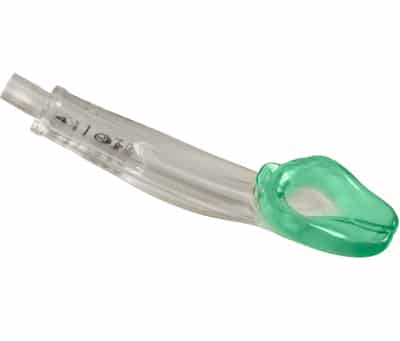Our medics find themselves practicing in some of the most remote and challenging environments in the world. Whether on a ship in the middle of the arctic, at a military base in Afghanistan, or building a pipeline across the plains of North America, our clients constantly depend on us to provide the most effective medical care.
In pursuit of this goal we are constantly reassessing our medical protocols and equipment. That’s why, after careful consideration, research, and hands-on experience on the part of our Chief Medical Officer Dr. Jayson Eversgerd, we’ve recently switched our advanced airway equipment from the King LT to the i-gel.
Advanced airway equipment protects the airway during CPR to ensure that rescue breaths don’t cause negative secondary effects, like vomit aspiration. The i-gel is a simpler, faster, and safer supraglottic airway device. In fact, it’s been so effective and can be used so quickly that some have called into question whether any prehospital attempt to endotracheally intubate should ever be made.
Here are three primary benefits of the i-gel compared to other devices like the King LT:
1. Simplicity
The i-gel is made of a soft, gel-like thermoplastic elastomer that makes up the non-inflatable cuff. The i-gel’s non inflatable cuff makes a nontraumatic tight seal over the laryngeal, pharyngeal and parapharyngeal structures. This non-inflatable cuff has a number of potential advantages, including easier insertion, minimal risk of tissue compression, and stability after insertion (i.e. no position change with cuff inflation)1. It is not necessary to insert fingers into the mouth of the patient for full insertion. The smooth contiguous under surface of the device, from the tip of the bowl and throughout the entire tube section, allows the device to easily slide along the back of the throat and securely into place.
Because of its simple design, the i-gel requires less technical skill than previous methods and requires little training, both initially and ongoing. Additionally, the device is only ever intended for single-patient use, meaning there is no sterilization required after use.
2. Speed
An experienced user of the i-gel can achieve successful insertion in less than five seconds and studies have shown that the i-gel is faster than almost any other supraglottic airway device because it does not require inflation of a cuff2. All that is required to prepare the device for use is simple lubricating the front, back, and sides of the non-inflating cuff with a water-based lubricant. In comparison, the King LT requires filling of the balloon cuff after insertion. Most importantly, the i-gel’s speed of entry has translated to much higher first pass success rates than any other supraglottic airway device on the market.
The recommended insertion technique includes the following steps:
- Grasp the lubricated i-gel firmly along the integral bite block. Position the device so that the i-gel cuff outlet is facing towards the chin of the patient.
- The patient should be in the ‘sniffing the morning air’ position with head extended and neck flexed. The chin should be gently pressed down before proceeding to insert the i-gel.
- Introduce the leading soft tip into the mouth of the patient in a direction towards the hard palate.
- Glide the device downwards and backwards along the hard palate with a continuous but gentle push until a definitive resistance is felt.
3. Safety
The i-gel’s design is truly anatomically correct compared to previous devices. Developed with data drawn from studies of fresh cadaveric neck dissections, direct and indirect pharyngo-laryngeal endoscopies, X-rays, and CT and MRI imaging, it’s design minimizes multidirectional forces of compression or displacement trauma to the tissues and structures in the vicinity.
This anatomical design, along with the soft medical grade thermoplastic elastomer, are less likely to cause adverse outcomes when compared with other supraglottic devices. The risk of rotation and malpositioning leading to partial or complete airway obstruction are extremely low with the i-gel.
The Bottom Line
The i-gel is widely used in prehospital medicine in the UK and Australia and is the standard of care for field resuscitations in the UK for many of the reasons outlined above. These same benefits make it perfect for our staff operating in remote, challenging, and industrial environments. As Remote Medical International strives to ensure that our clients are constantly receiving the highest quality of care from our medics in the field, we are proud to be continuously looking for opportunities to learn and improve.
Below, you’ll find a tutorial from the manufacturer of the i-gel, demonstrating what an incredibly easy device this is to use, even by very novice medical providers.
2 Comparison of the i-gel and Other Supraglottic Airways in Adult Manikin Studies


